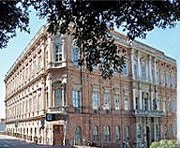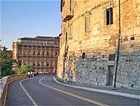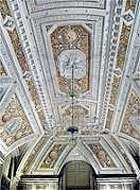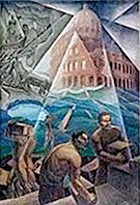


Giuseppe Antonori commissioned this Baroque palace, which was designed by the Roman architect Francesco Bianchi and executed by Pietro Carattoli. Its inspiration was Palazzo Doria in the Corso, Rome. In 1855, the palace passed to the Martinori family from Rome. The palace received its current name in 1875, when the Piedmontese Romeo Gallenga bought it soon after his marriage to the English Mary Montgomery Stuart. In 1878, the young Venetian actor Carlo Goldoni made his début in the small theatre here, and the adjacent room was named Sala Goldoni in his honour.

Frescoes (1754-8)
These frescoes by Pietro Carattoli on the “piano nobile” depict allegories of the seasons.
Frescoes (1862)
These frescoes by Domenico Bruschi on the vault of a room in the mezzanine celebrate the unification of Italy.
Frescoes (1874)

Apotheosis of Rome (20th century)

Read more:
P. Belardi (Ed), “Il Palazzo Gallenga Stuart di Perugia”, (2008) Perugia
Return to Monuments of Perugia.
Return to Walk V.

